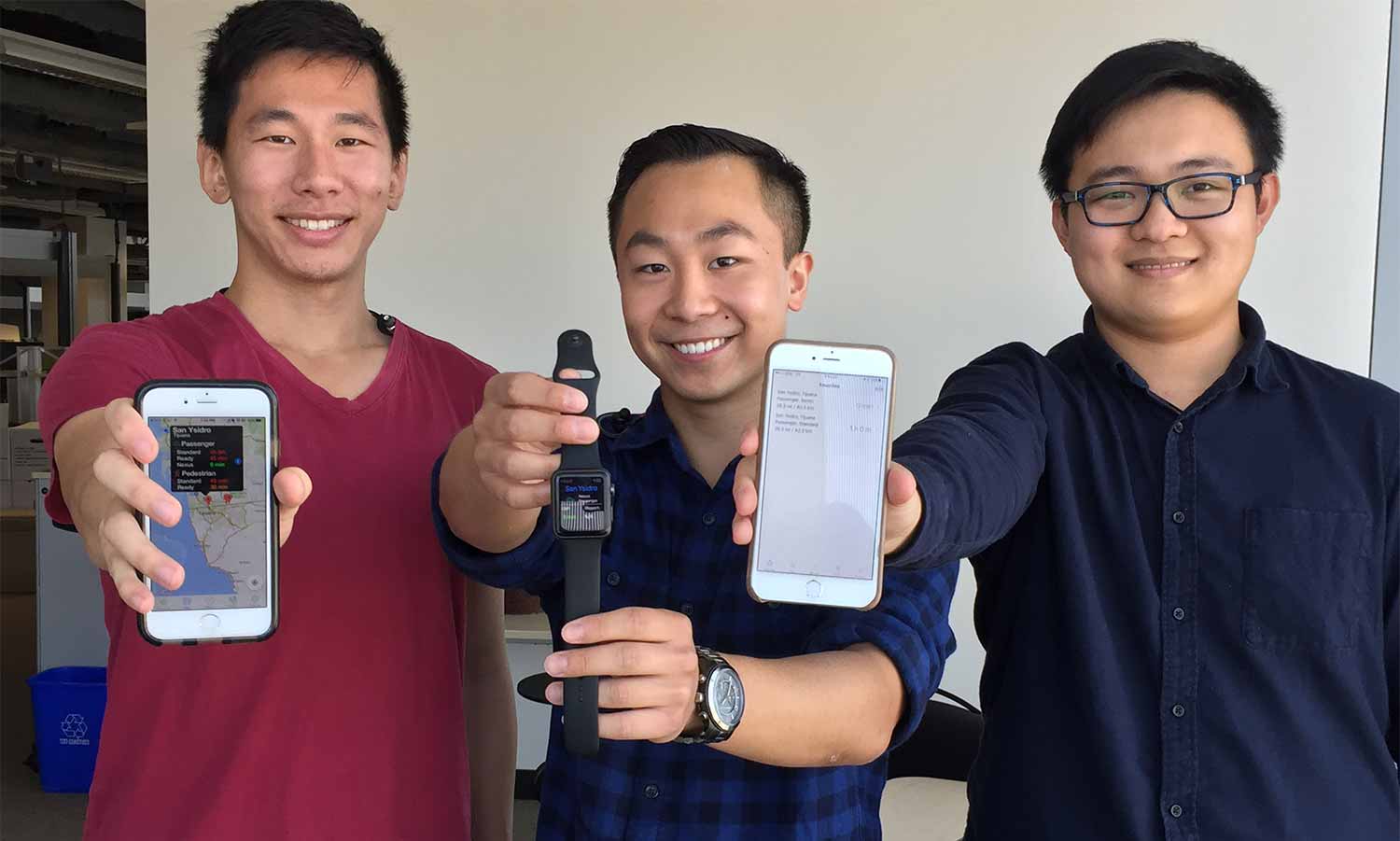
New Apple Watch App Provides Best Time to Cross International Borders
Published Date
By:
- Tiffany Fox
Share This:
Article Content

Kevin Gu, Brian Chin and Martin Gao, seniors in the UC San Diego Computer Science and Engineering Department, helped develop the app.
Researchers at the University of California, San Diego have developed an app for the Apple Watch that provides users with wait times to enter the United States from its northern and southern borders at 70 different points of entry. The app is believed to be the first for the Apple Watch developed by UC San Diego researchers.
Called “Best Time to Cross the Border,” the Apple Watch app is an evolution of an app designed by Qualcomm Institute Principal Development Engineer Ganz Chockalingam and his students for the Android and iPhone. Like its predecessor, the Apple Watch version (when synced to an iPhone) provides estimates for border wait times based on real-time crowd-sourced data, but does so at-a-glance, with the flick of a button and “without the need to check your phone,” says Chockalingam.
The development team, which includes computer science and engineering seniors Brian Chin, Martin Gao and Kevin Gu, also released a new feature for the iPhone version of the app that allows the user to add “favorite” border crossing locations to determine corresponding wait times more quickly. Another new gesture-based control feature makes it possible to submit an iReport timer by simply shaking one’s iPhone. When drivers reach the end of the line at the border, they shake the phone to start a timer and shake it again when they cross a checkpoint, which submits an automated iReport of the driver’s wait time to the app’s database. The data are then aggregated to provide a weighted average of wait time based on the most recent driver report.
Along with driver-reported wait times, the app also aggregates GPS data from users’ phones as they drive past “geofences” that are strategically located near the borders. Collecting such data, however, is complicated by a disparity in the roaming capabilities of networks on both sides of the border. On the Mexican side, for instance, roaming is limited in some areas to only 3 km. “If your WiFi is not on,” Chockalingam says,” your location can be off by a mile.”
Data from Customs and Border Protection (CBP) is also incorporated into the app’s algorithms but Chokalingam notes that the CBP-reported wait times “are updated at best once per hour, which is not frequent enough. Things can change a lot in an hour.”
Still, this combination of data from drivers, phones and border agents amounts to a predictive system that is accurate enough to have garnered 200,000 downloads for both Android and iOS.
Interestingly, Chockalingam notes that usage of the app hints at economic disparities between users – for instance, the app is more often used by those in the fee-based Sentry lanes, which are also, Chockalingam deduces, those who are most able to afford a smartphone.
Chockalingam says that future improvements to the Apple Watch feature could include haptic vibration to alert the users of severe congestion. His team is also working with Natasha Balac, director of the Predictive Analytics Center of Excellence at the San Diego Supercomputer Center, to mine the data collected. The hope is that they can determine if usage of the app itself has led to a reduction in wait times at the border, if wait times are correlated with seasonal changes or if the app can be used to help distribute traffic to more optimal border crossing.
Chockalingam says his team also hopes to eventually extend the app’s predictive technology to other scenarios that require a lot of waiting, such as airport security checks or – the holy grail – standing in line at the DMV.
Share This:
You May Also Like
Stay in the Know
Keep up with all the latest from UC San Diego. Subscribe to the newsletter today.


